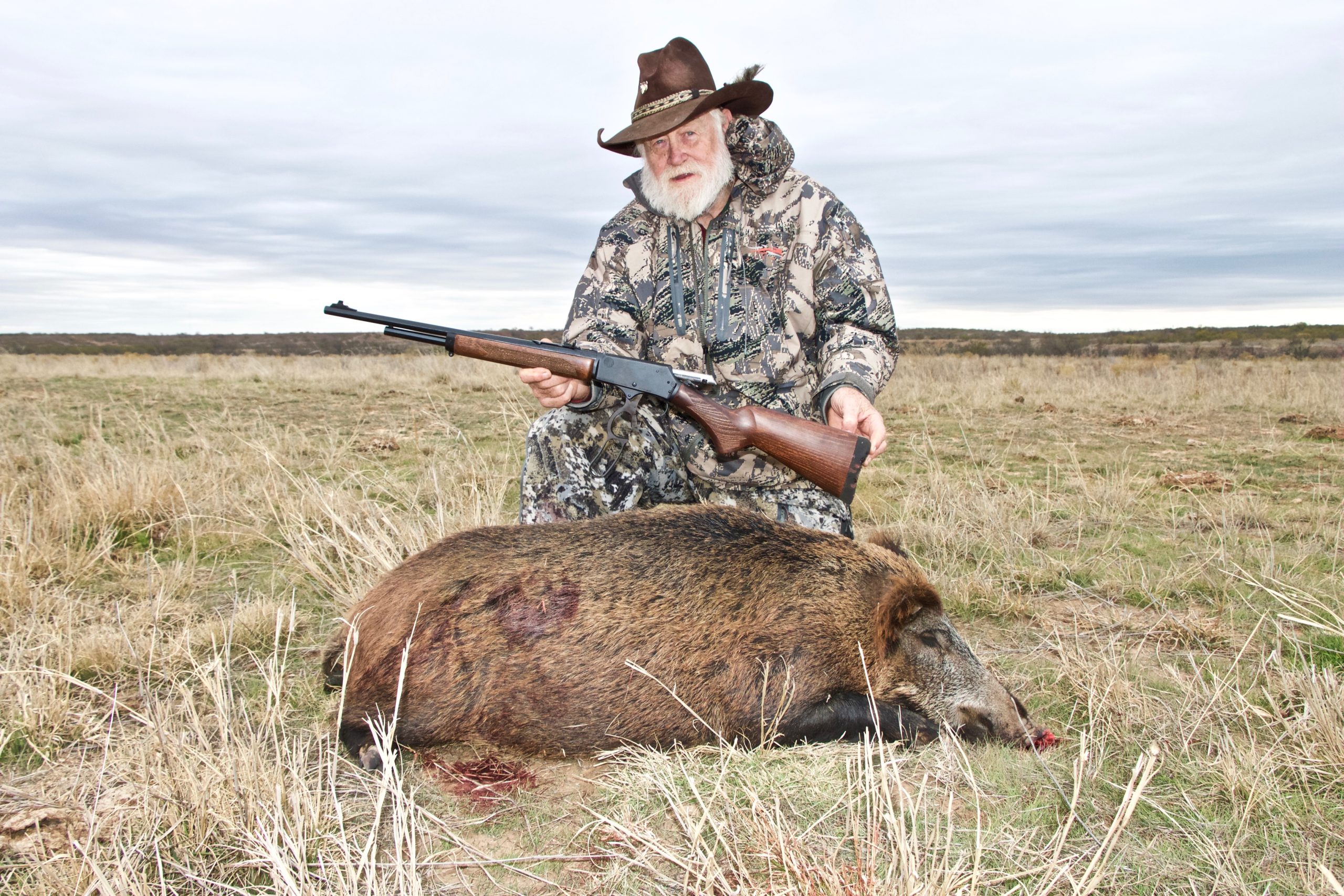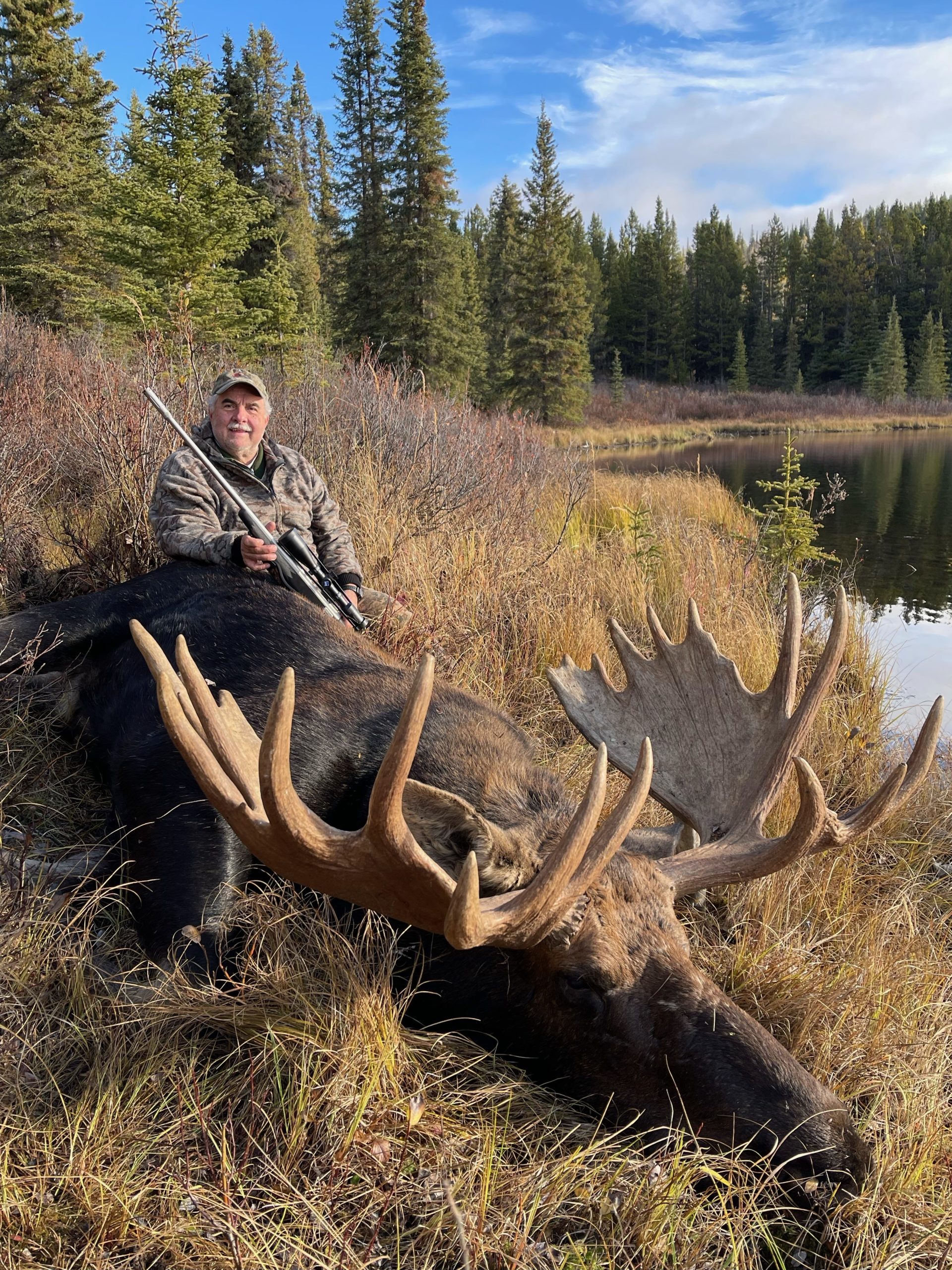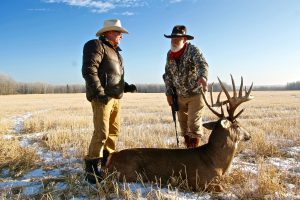 Years ago, back when I was hunting a lot with an inline muzzleloader, a Knight MK85, thanks to the rifle’s creator, Tony Knight, I often got to hunt the Iowa Late Muzzleloader season which extended nearly into the middle of January. During those years using Tony’s creation, shooting 250-grain Hornady SST sabots propelled by 100-grains of Hodgdon’s Pyrodex, I took some truly impressive whitetails, including my widest a basic 8-point with a split brow, a short drop-tine and main beams over 30-inches long, also my longest main beam buck ever. I shot him on a snow-covered ridge with only 10 minutes remaining in the season. The buck was staged to head to a food plot at the ridge’s base, likely after dark. Once again success had come at nearly the last minute of the hunt.
Years ago, back when I was hunting a lot with an inline muzzleloader, a Knight MK85, thanks to the rifle’s creator, Tony Knight, I often got to hunt the Iowa Late Muzzleloader season which extended nearly into the middle of January. During those years using Tony’s creation, shooting 250-grain Hornady SST sabots propelled by 100-grains of Hodgdon’s Pyrodex, I took some truly impressive whitetails, including my widest a basic 8-point with a split brow, a short drop-tine and main beams over 30-inches long, also my longest main beam buck ever. I shot him on a snow-covered ridge with only 10 minutes remaining in the season. The buck was staged to head to a food plot at the ridge’s base, likely after dark. Once again success had come at nearly the last minute of the hunt.
There is an old statement, “A lot of things would not get done, were it not for the last minute!” That too applies to deer hunting.
A few years ago in Alberta, I shot my biggest antlered “real deer” whitetail deer with mere minutes remaining in the hunting season. Legal shooting hours in Alberta like Iowa are from official sunup to sundown! I had passed several bucks I would have in previous years taken, but that year I was not hunting with a camera of any kind. I had decided prior to the hunt to only shoot a buck I thought would exceed 200 Boone & Crockett inches. Last day of the season with only about six or seven minutes remaining before official sundown the buck stepped out into an open harvested grain field. I waited for him to walk farther into the field, so if I needed a second shot, there would be an opportunity to shoot before he got to cover. It took but one shot from my .300 Win Mag using Hornady’s Precision Hunter, 200-grain ELD-X to put him down.
Food, as with the Iowa deer, had been the undoing of the Alberta buck. I had hoped the same would happen when I hunted Alberta once again with Ron Nemetchek’s North River Outfitting the last week of November 2023. Unfortunately, warm weather and no snow, no ice helped maintain “green feed” just about everywhere. Mature bucks did not “move”. Normally the last week of November is cold and snowy. In spite of not pulling the trigger on a deer, the hunt was fabulous. I counted no less than 120 different yearling and 2-year-old bucks. The future for monstrous bucks is secured!
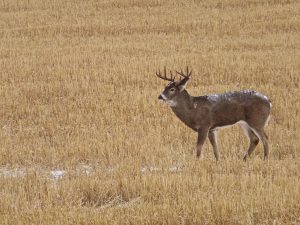
Once again food had come into play, this time an abundance of it!
We in Texas are fortunate in many ways when it comes to hunting, particularly whitetail deer. Blessed with an excellent deer herd and landowners who choose to properly manage habitat and deer herds. This desire from landowners and wildlife biologist lead to the addition of the Managed Land Deer Permit or MLD Permit. This permit is issued to landowners who establish and then maintain a deer management program. Each year surveys are conducted on the property, and then based on numerous factors including deer densities, buck to doe ratios, fawn survival rates, range conditions and long-term management objectives and goals and appropriate bucks and antlerless permits are issued. Properties which have the MLD Permit can start hunting the Saturday closest to October 1 through the end of February, and those who take deer are required to use the permits issued and cannot use tags that come with their Texas hunting license. Nor do deer taken through the MLD Permit count against the State’s bag limits, which can vary from county to county.
I am fortunate in that I hunt several places in Texas, some that are on the MLD Permit, including the Cotton Ranch in Northeast Texas where I also help with their management program, and a lease I am on in western Texas.
As this is being written shortly after attending the highly successful and fun DSC Convention and Outdoor Expo, I have not yet taken a deer on the northeastern Texas property. There, I have passed up several really nice bucks, but ones that will have bigger antlers in the future. I plan on hunting the property again in early February. Bucks there tend to cast their antlers there in March. Hunting there I have seen numerous bucks, but none that I felt needed to be removed due to “messed up antlers.” David Cotton whose family owns the property recently took a buck with a messed-up antler on one side. David had seen that buck the previous season but could not get a good shot. This time he put him down a Hornady Precision Hunter .30-06 ELD-X bullet. We were not concerned the buck might pass on such genes, but he was post-mature and was eating the same forage a younger buck could be eating. Checking his teeth, we determined the buck was 8+ years old, an excellent buck to take! When I return to the ranch in February, we will finish taking the recommended number of does. And I am still looking for a buck I passed early in the season. Hunting him has been thus far an unsuccessful though thoroughly fun “adventure”.
On my lease in western Texas, each lease holder is allotted a certain number of bucks and does again based on the long-term habitat and deer management program. I have been fortunate to take a couple of bucks. The first was an older 5 x 2 which I rattled in late one evening back in November. I hunted the property again in late December at which time my son-in-law Lance Tigrett and I both took old bucks and a couple of does. I shot mine with Rossi lever-action rifles, one in .44 Mag and the other in .30-30 Win. I plan on taking another two does with my Taurus Raging Hunter chambered in .44 Mag and .454 Casull shooting appropriate Hornady ammo. And another buck with my Mossberg Patriot Predator in 7mm PRC, shooting 175-grain ELD-X Hornady Precision Hunter, which is where all the above is leading … last minute hunting.
The northeastern Texas property has several excellent food plots. With the rut past, bucks trying madly to repair from those rigors, no doubt they will be looking for food. I hope to take advantage of that factor.
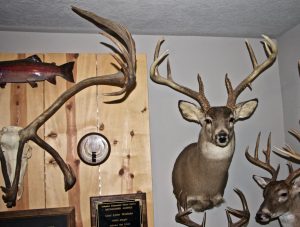 The western Texas, the same thing applies although there we only have native range, no food plots. But, certain areas of the ranch produce a tremendous amount of forbs, fancy term for weeds, that are extremely nutrition and palatable. Deer love them, particularly one called “fillaree,” a nearly prostate plant that grows throughout portions of western and northern Texas. The “low country” of our lease is covered with it and attracts a lot of deer. It is here I plan on spending some time looking for at least one more buck. In February of 2023 while hunting the lease, I saw numerous bachelor herds and some of the biggest bucks I had seen the entire hunting season. I am hoping that will again be the case this year.
The western Texas, the same thing applies although there we only have native range, no food plots. But, certain areas of the ranch produce a tremendous amount of forbs, fancy term for weeds, that are extremely nutrition and palatable. Deer love them, particularly one called “fillaree,” a nearly prostate plant that grows throughout portions of western and northern Texas. The “low country” of our lease is covered with it and attracts a lot of deer. It is here I plan on spending some time looking for at least one more buck. In February of 2023 while hunting the lease, I saw numerous bachelor herds and some of the biggest bucks I had seen the entire hunting season. I am hoping that will again be the case this year.
I hope to take a few more whitetails before hunt’s end. I still have room in my freezer, and I also supply venison to several other families beyond my own. Every bit of venison I can harvest is utilized!
If you are fortunate to still be hunting deer in February, the best advice I can give after 70 years of hunting whitetails … is hunt food sources!

